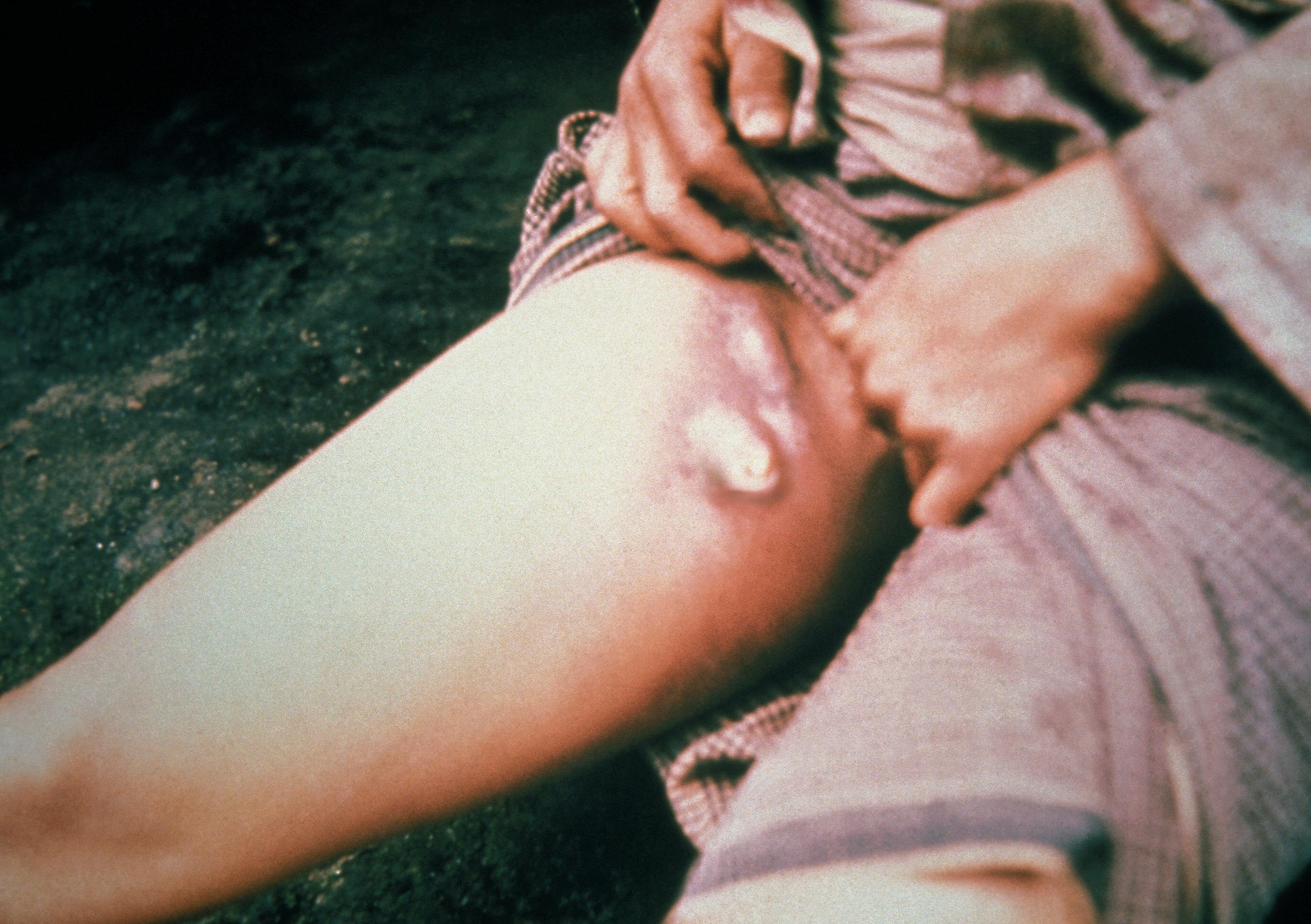Bubo on:
[Wikipedia]
[Google]
[Amazon]
 A bubo (Greek βουβών, ''boubṓn'', 'groin') is
A bubo (Greek βουβών, ''boubṓn'', 'groin') is
 A bubo (Greek βουβών, ''boubṓn'', 'groin') is
A bubo (Greek βουβών, ''boubṓn'', 'groin') is adenitis
Adenitis is a general term for an inflammation of a gland. Often it is used to refer to lymphadenitis which is the inflammation of a lymph node.
Classification
Lymph node adenitis
''Lymph adenitis'' or ''lymph node adenitis'' is caused by infec ...
or inflammation of the lymph node
A lymph node, or lymph gland, is a kidney-shaped organ of the lymphatic system and the adaptive immune system. A large number of lymph nodes are linked throughout the body by the lymphatic vessels. They are major sites of lymphocytes that includ ...
s and is an example of reactive infectious lymphadenopathy
Lymphadenopathy or adenopathy is a disease of the lymph nodes, in which they are abnormal in size or consistency. Lymphadenopathy of an inflammatory type (the most common type) is lymphadenitis, producing swollen or enlarged lymph nodes. In c ...
.
Classification
Buboes are a symptom ofbubonic plague
Bubonic plague is one of three types of Plague (disease), plague caused by the Bacteria, bacterium ''Yersinia pestis''. One to seven days after exposure to the bacteria, flu-like symptoms develop. These symptoms include fever, headaches, and ...
and occur as painful swellings in the thighs, neck, groin or armpits. They are caused by ''Yersinia pestis
''Yersinia pestis'' (''Y. pestis''; formerly ''Pasteurella pestis'') is a Gram-negative bacteria, gram-negative, non-motile bacteria, non-motile, coccobacillus Bacteria, bacterium without Endospore, spores. It is related to pathogens ''Yer ...
'' bacteria spreading from flea
Flea, the common name for the order (biology), order Siphonaptera, includes 2,500 species of small flightless insects that live as external parasites of mammals and birds. Fleas live by hematophagy, ingesting the blood of their hosts. Adult f ...
bites through the bloodstream to the lymph nodes, where the bacteria replicate, causing the nodes to swell. Plague buboes may turn black and necrotic
Necrosis () is a form of cell injury which results in the premature death of cells in living tissue by autolysis. The term "necrosis" came about in the mid-19th century and is commonly attributed to German pathologist Rudolf Virchow, who is ...
, rotting away the surrounding tissue, or they may rupture, discharging large amounts of pus
Pus is an exudate, typically white-yellow, yellow, or yellow-brown, formed at the site of inflammation during infections, regardless of cause. An accumulation of pus in an enclosed tissue space is known as an abscess, whereas a visible collect ...
. Infection
An infection is the invasion of tissue (biology), tissues by pathogens, their multiplication, and the reaction of host (biology), host tissues to the infectious agent and the toxins they produce. An infectious disease, also known as a transmis ...
can spread from buboes around the body, resulting in other forms of the disease such as pneumonic plague
Pneumonic plague is a severe lung infection caused by the bacterium '' Yersinia pestis''. Symptoms include fever, headache, shortness of breath, chest pain, and coughing. They typically start about three to seven days after exposure. It is o ...
.
Management
Plague patients whose buboes swell to such a size that they burst tend to survive the disease. Before the discovery ofantibiotic
An antibiotic is a type of antimicrobial substance active against bacteria. It is the most important type of antibacterial agent for fighting pathogenic bacteria, bacterial infections, and antibiotic medications are widely used in the therapy ...
s, doctors often drained buboes with leeches or heated rods to save patients.
Buboes are also symptoms of other diseases, such as chancroid
Chancroid ( ) is a bacterial sexually transmitted infection characterized by painful sores on the genitalia. Chancroid is known to spread from one individual to another solely through sexual contact. However, there have been reports of accidenta ...
and lymphogranuloma venereum
Lymphogranuloma venereum (LGV; also known as climatic bubo, Durand–Nicolas–Favre disease, poradenitis inguinale, lymphogranuloma inguinale, and strumous bubo) is a sexually transmitted infection caused by the invasive serovars L1, L2, L2a, ...
. In these conditions, a two-week course of antibiotics is the recommended treatment, and incision and drainage or excision of the swollen lymph nodes is best avoided. However, aspiration may sometimes be performed to prevent buboes from rupturing. Although incision and drainage yields better results in such cases—since usually no further intervention is necessary, whereas repeat aspirations may be required—incision and drainage
Incision and drainage (I&D), also known as clinical lancing, are minor surgical procedures to release pus or pressure built up under the skin, such as from an abscess, boil, or infected paranasal sinus. It is performed by treating the area wit ...
wounds may heal more slowly, increasing the risk of secondary infection.
References
{{Authority control Symptoms and signs: Skin and subcutaneous tissue